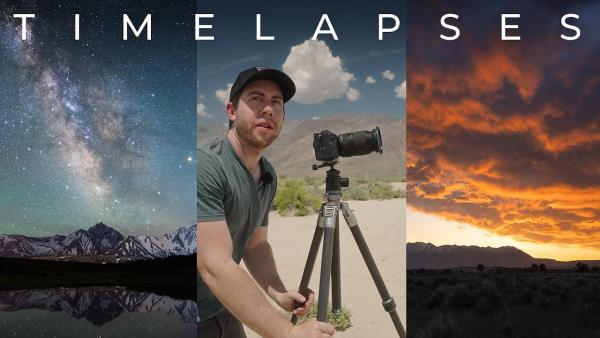Shoot Breathtaking Landscape Time-Lapse Sequences with These Straightforward Tips (VIDEO)

We've all been awestruck by breathtaking time-lapse "videos" and wondered if creating them was within our skills. As you'll see in the tutorial below, just about anyone with a camera and some know-how can get the job done.
According to the experts at National Geographic, "Time-lapse photography is used to capture changes or movement that occurs over a long period of time." The idea is to set up your camera on a tripod and capture a bunch of images at regular intervals. The magic occurs when the individual shots are combined and viewed in rapid sequential order for an otherworldly experience.
Michael Shainblum is a professional photographer/videographer based in San Francisco, with a knack for simplifying seemingly complicated tasks. Today's behind-the-scenes episode is a great example as it only takes him 16 minutes to explain how you can shoot amazing time-lapses of your own.

You'll watch Shainblum do his thing amidst the foothills of the imposing Eastern Sierra mountains as he shoots dramatic storm sequences and night sky time-lapses, while explaining how you can do the same. He discusses the necessary gear, important camera settings, proper composition, and several other key variables.
One of Shainblum's favorite time-lapse subjects are clouds moving across the sky, and on this day he's greeted with great opportunities as thunderous cloud cells full of texture blow North above the scene. He's shooting with a Sony a7S III mirrorless camera and a Tamron 20-200mm zoom, but you can use the methods he describes with just about any modern gear you own.
It's a rather hazy day so Shainblum threads a polarizing filter onto his lens, which dramatically darkens the sky and pumps up the shot. He explains that one difference between shooting conventional photos and time-lapses is the importance of anticipating motion; in this case, understanding exactly where the clouds are going to move through the scene.

Shainblum recommends shooting in Raw and using Manual focus so nothing shifts as you capture the sequence. He typically uses Manual exposure mode, even under consistent light, for reasons that he explains. He also describes his approach for modifying exposure when shooting late in the day, so the sequence gradually becomes darker and darker as it proceeds—just like it would when the sun begins to drop below the horizon.
You'll be blown away while watching this time-lapse, as you will when viewing the others he demonstrates in this impressive lesson. You can find more helpful tips by paying a visit to Shainblum's YouTube channel.
And be sure not to miss the tutorial we posted from another accomplished landscape photographer who explains the best camera settings to use for shooting epic sunset photographs.
- Log in or register to post comments
















































